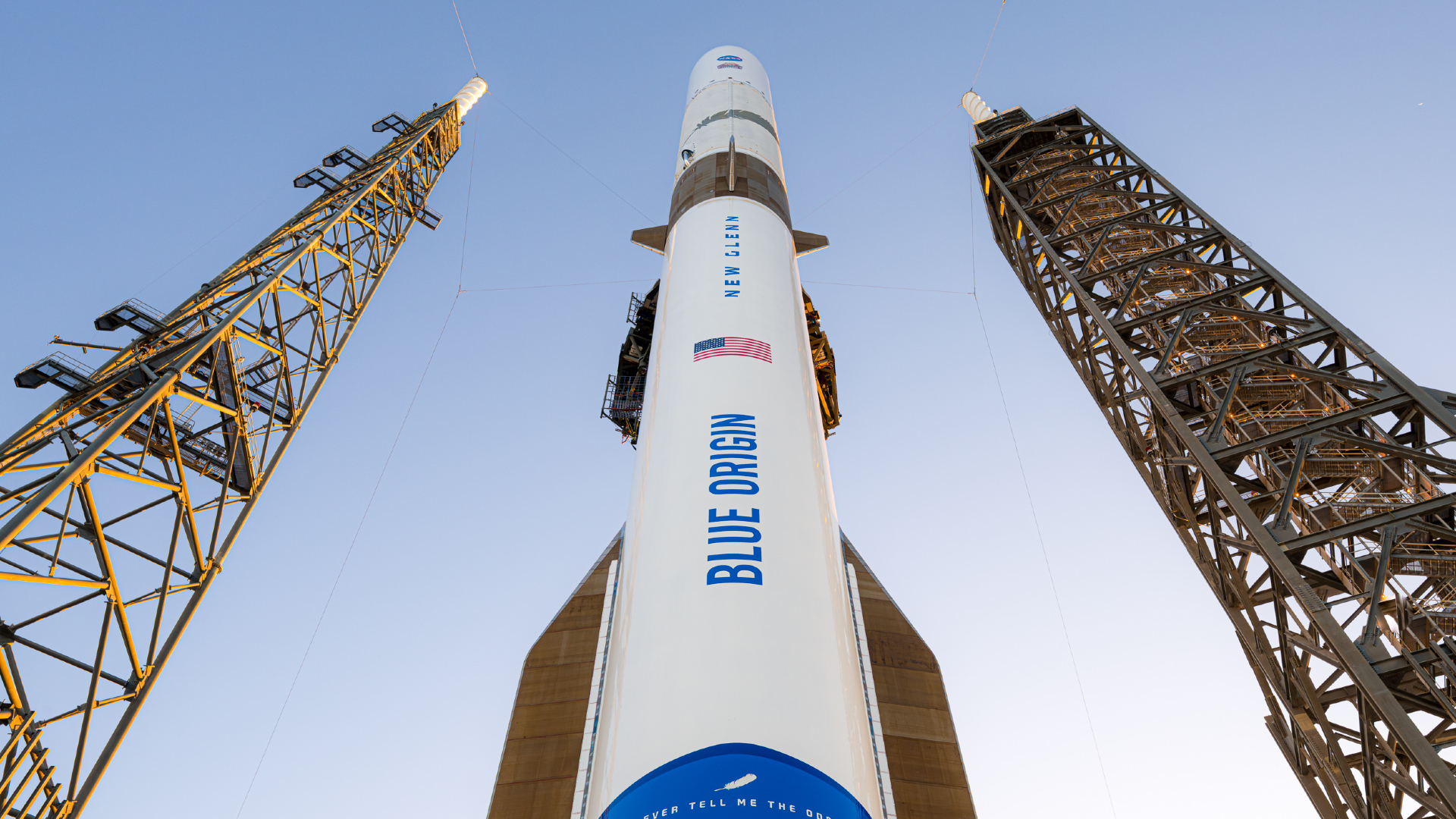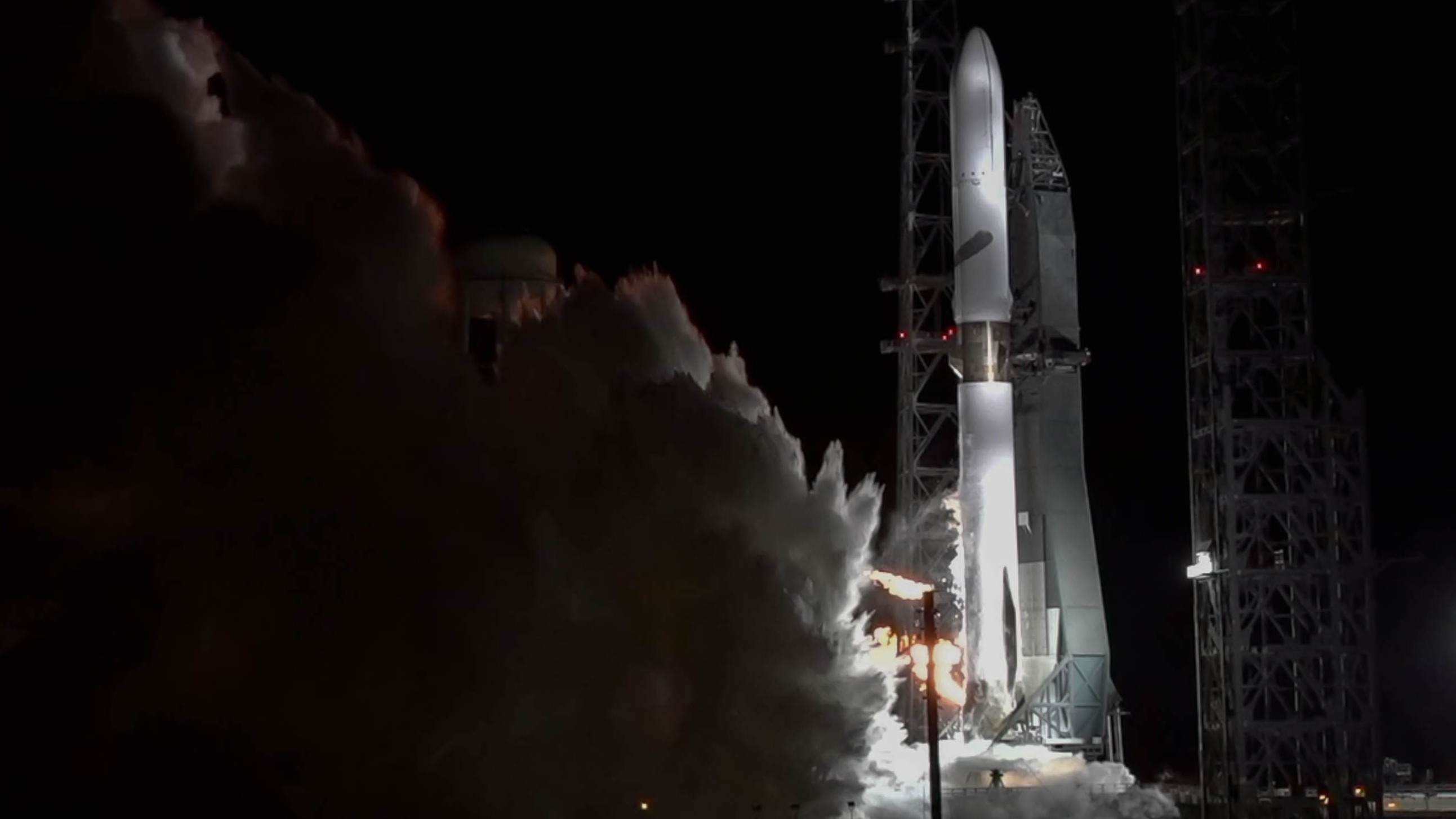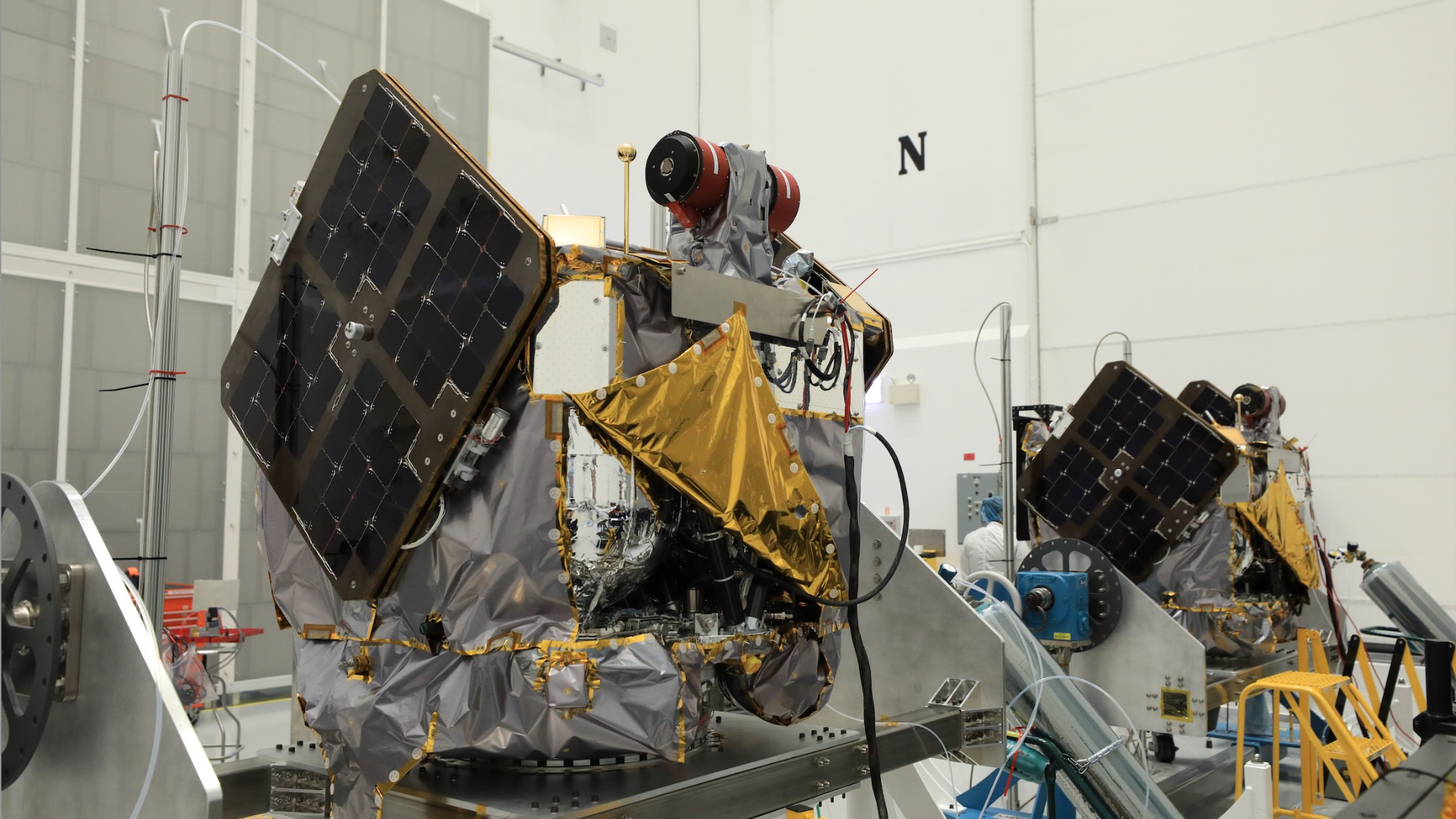Watch Blue Origin's huge New Glenn rocket launch a NASA 'ESCAPADE' to Mars today after delays
Liftoff of the ESCAPADE mission is now scheduled for Thursday (Nov. 13) at 2:57 p.m. ET.
CAPE CANAVERAL, Fla. — After a year of delay, NASA's next Mars mission is ready to launch on Blue Origin's powerful New Glenn rocket, and you'll be able to watch it all live online.
The twin ESCAPADE Mars probes are scheduled to lift off atop the partially reusable New Glenn from Florida's Cape Canaveral Space Force Station today (Nov. 13), during a nearly 90-minute window that opens at 2:57 p.m. EST (1957 GMT). It will be the third attempt for this mission; the first try, on Sunday (Nov. 9), was scrubbed due to weather, and the second was called off due to an intense solar storm.
You can watch the launch — the second-ever for New Glenn — live via Blue Origin, which was founded by Amazon's Jeff Bezos, starting about 30 minutes before liftoff. Space.com will carry the feed as well on our YouTube channel, which is embedded at the top of this page.
ESCAPADE (short for "Escape and Plasma Acceleration and Dynamics Explorers") will be the first Mars mission to launch in more than five years, since NASA's Perseverance rover and Ingenuity helicopter lifted off together on July 30, 2020. The mission was originally scheduled to launch in October 2024, but NASA postponed the flight to no earlier than spring 2026 to avoid potentially significant cost overruns in case the ESCAPADE team was unable to launch on time.
"It's been a long road, and very grateful to all the partners that have worked so hard with us for so many years," ESCAPADE Principal Investigator Robert Lillis of the University of California, Berkeley's Space Sciences Laboratory, which is overseeing the mission for NASA, told reporters in a prelaunch briefing on Saturday (Nov. 8).
UC Berkeley, Blue Origin and Rocket Lab (which built the twin ESCAPADE probes) hosted the press briefing. NASA was not able to be present due to the government shutdown.
The ESCAPADE mission, which costs less than $80 million, consists of two spacecraft, which were built by Rocket Lab and will be operated for NASA by the University of California, Berkeley. That latter fact explains the duo's names — Blue and Gold, which are UC Berkeley's school colors.
New Glenn will launch Blue and Gold toward the Earth-sun Lagrange Point 2 (L2), a gravitationally stable spot about 930,000 miles (1.5 million kilometers) beyond our planet.
The pair will hang out there for 12 months while studying space weather. They'll loop by Earth in November 2026, getting a gravitational boost from our planet to head out to Mars, which they'll reach about 10 months later.
Breaking space news, the latest updates on rocket launches, skywatching events and more!
This complex trajectory is required by orbital dynamics: Earth and Mars align just once every 26 months for efficient interplanetary travel, and the next such window opens in late 2026.
"We are using a very flexible mission design approach where we go into a loiter orbit around Earth in order to sort of wait until Earth and Mars are lined up correctly in November of next year to go to Mars," Lillis said Saturday.

After the ESCAPADE probes reach the Red Planet, they will spend about seven months lowering themselves into precisely aligned orbits, then gather data for at least 11 months.
The orbiters will "fly in formation to map the magnetic fields, upper atmosphere and ionosphere of Mars in 3D, providing the first stereo view of the Red Planet’s unique near-space environment," UC Berkeley wrote in a mission description.
"What they find will help scientists understand how and when Mars lost its atmosphere and provide key information about conditions on the planet that could affect people who land or settle on Mars," the university added.
Today's launch will be the second to date for the 321-foot-tall New Glenn, which can haul about 50 tons (45 metric tons) of payload to low Earth orbit.
The rocket debuted with a successful test flight on Jan. 16, 2025, which sent a prototype version of Blue Origin's Blue Ring spacecraft platform to orbit.
The company failed in its attempt to land New Glenn's first stage on a ship at sea that day. It will try this landmark maneuver again today, so there will be lots of action for space fans to watch.
"Our number one objective is to deliver ESCAPADE safely and successfully on its way to L2, and then eventually on to Mars," Laura Maginnis, Blue Origin's vice president of New Glenn mission management, said during Saturday's briefing. "We also wanting to land our booster, but if we don't land the booster, that's okay. We have several more vehicles in production."
New Glenn's first-stage booster will hopefully land on the landing platform Jacklyn now stationed in the Atlantic Ocean about 375 miles off the Florida coast, Blue Origin officials said. It should take up to five days to return the booster to Cape Canaveral, if all goes well.

Blue Origin originally had three days — Nov. 9, Nov. 10 and Nov. 11 — in which to try and launch ESCAPADE to Mars. But a new wrinkle popped up on Friday (Nov. 7).
Due to the government shutdown, the Federal Aviation Administration issued a halt to daytime commercial rocket launches as of Nov. 10 in order to prioritize airspace for commercial air travel. Air traffic controllers have been working without pay during the shutdown, and the restrictions on commercial rocket launches are aimed at easing the strain on controllers and pilots, FAA officials have said.
After Blue Origin was unable to launch on Sunday (Nov. 9), the company sought an exception to the FAA restrictions for potential launches later in the wekk, since those windows are during the daytime, Maginnis said.
"We are working really closely with both our partners at the FAA and with the NASA team to ensure that we're, of course, honoring and respecting the airspace expectations there and the safety requirements, while at the same time meeting the objectives that NASA and the Blue Origin have for this mission," Maginnis said. "So, we're working closely with them on opportunities for exceptions to the policy based on how our mission goes."
Those efforts were successful, as New Glenn and ESCAPADE were set to launch on Wednesday — and are now ready to go today.
Editor's note: This story was substantially updated to incude comments and details from Blue Origin and UC Berkeley's ESCAPADE prelaunch briefing on Nov. 8. Space.com Editor-in-Chief Tariq Malik contributed to this report from Cape Canaveral, Florida. It was updated again at 3:30 p.m. ET on Nov. 11 with more information about the new Nov. 12 launch date. It was updated at 12:30 a.m. ET on Nov. 13 with news of the Nov. 13 launch date.

Michael Wall is a Senior Space Writer with Space.com and joined the team in 2010. He primarily covers exoplanets, spaceflight and military space, but has been known to dabble in the space art beat. His book about the search for alien life, "Out There," was published on Nov. 13, 2018. Before becoming a science writer, Michael worked as a herpetologist and wildlife biologist. He has a Ph.D. in evolutionary biology from the University of Sydney, Australia, a bachelor's degree from the University of Arizona, and a graduate certificate in science writing from the University of California, Santa Cruz. To find out what his latest project is, you can follow Michael on Twitter.
You must confirm your public display name before commenting
Please logout and then login again, you will then be prompted to enter your display name.


